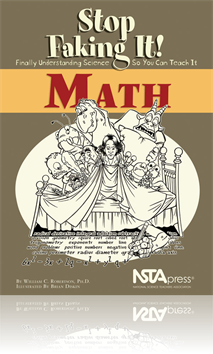All High School resources
NSTA Press Book
Genetically Modified Crops: Resources for Environmental Literacy
Supporters of genetic engineering point to the potential of genetically modified (GM) crops to improve human health and increase environmental protection. But some concerned groups argue that the risks of GM crops may outweigh their benefits. These g...
NSTA Press Book
Radioactive Waste: Resources for Environmental Literacy
Since World War II, hundreds of thousands of tons of radioactive materials have been produced in the United States. How we will dispose of nuclear waste is a controversial issue with a large technical component. This book provides a useful resource...
By Environmental Literacy Council, National Science Teachers Association (NSTA)
Book Chapter
As stated in “About This Book,” the author isn’t going to take the usual approach to the subject of chemistry. Because virtually all explanations of chemical reactions are based on our current model of atoms and molecules, the first thing to do...
Book Chapter
At the end of the first chapter, you realized, hopefully, that the model of an atom that we have so far (Rutherford’s model of a concentrated positive nucleus with negative charges around it) doesn’t go very far in helping us explain observations...
Book Chapter
In thinking about a title for this chapter, the word periodicity came to mind. I was sure this had some kind of pop culture reference. After discussing this with my wife, we figured I was thinking of synchronicity, which is a reference to music b...
Book Chapter
We now know enough about atoms and how they combine to investigate a number of different chemical reactions. We’ll even be able to represent those reactions with symbols that tell us how many of each kind of atom we begin with and how many of each ...
Book Chapter
The word organic has lots of meanings in everyday life. Organic vegetables are ones grown without pesticides and organic beef comes from cattle that haven’t been given antibiotics. When it comes to chemistry, organic sometimes means something el...
NSTA Press Book
Uncovering Student Ideas in Science, Volume 2: 25 More Formative Assessment Probes
If Hollywood filmed this sequel, the studio would call it “Probes II: More Battles Against Misunderstandings.” Like the blockbuster before it, Volume 2 will reveal the surprising misconceptions students bring to the classroom—so you can adjust ...
By Page Keeley, Francis Eberle, Joyce Tugel
Book Chapter
The purpose of this assessment probe is to elicit students’ ideas about intensive and extensive properties of matter. The probe is designed to find out which properties students think will change if the amount of material changes and which will sta...
Book Chapter
This first chapter starts off with addition, subtraction, multiplication, division, fractions, and a few other things. It gives a demonstration of the basic differences between memorizing rules and really understanding the process. For those who te...
Book Chapter
Given that the vast majority of people reading this book will never ever have to teach calculus, you might be wondering why in the world the topic is being addressed here. Well, even though you might not teach calculus, chances are that when teachin...
Book Chapter
This chapter deals with fractions and decimals. This is one place where people who are otherwise fine with math jump off the boat and decide it's just too weird to continue. As with everything else, though, it's only a matter of understanding what'...




